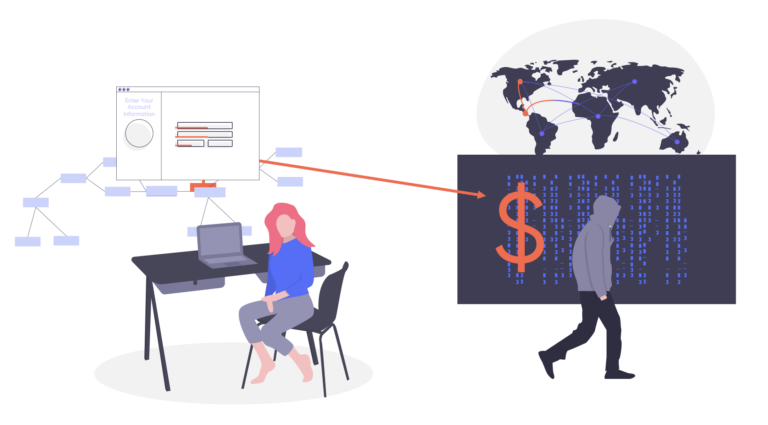Cross-site scripting (XSS) is a type of client-side code injection attack that allows a threat actor to embed malicious code on the client side of a website. The code then launches when the victim loads the website. The malicious code can be designed to do many different things, such as capture sensitive information when the user enters data into a form or to steal cookies to be used to impersonate the user for social engineering purposes.
What are the types of cross-site scripting?
There are two primary types of cross-site scripting: reflected cross-site scripting and persistent cross-site scripting. The more common of the two is reflective XSS, in which the attacker adds malicious content to the end of a URL. In a persistent cross-site scripting attack, the threat actor alters the code in the web application storage. The malicious script is executed every time a user visits the web page or a link on the web page.
What is the impact of a cross-site scripting attack?
Loss of Sensitive Customer Information—XSS attacks can involve the theft of sensitive information, including credit card data and name and address. Depending on the size of the business and the scope of the attack (e.g., multiple entities targeted at once), millions of individuals could be affected. It may also involve authorization cookie theft, which could lead to user impersonation.
Profit loss—XSS attacks can negatively damage reputation and discourage customer trust, which can have a harmful impact on profits.
Regulatory and Compliance Issues—Government and industry regulations, such as the Payment Card Industry Data Security Standards (PCI DSS) and the General Data Protection Regulations (GDPR) can subject businesses to lawsuits and fines should business customers be affected by an XSS attack.
What can businesses do to protect against cross-site scripting attacks?
Businesses can reduce the number and impact of XSS attacks by following these best practices:
Audit web assets: Inventory your web assets and know the type of data they hold. Look for vulnerable scripts and any signs of manipulation.
Regularly scan the client side: Regularly conduct deep-dive scans into client-side applications and software to reveal intrusions, behavioral anomalies, and unknown threats.
Block HTML in inputs: By sanitizing user input on the front-end and back-end, malicious code can be blocked from input submission.
Use automated monitoring and inspection: Monitoring and inspection activities are critical, but also time consuming if you don’t have an automated solution to regularly review client-side JavaScript code. A purpose-built solution that automates the process can be a fast and easy way to identify unauthorized script activity.
Validate form inputs: Limit information that a user enters in a form. For example, require all content to be alphanumeric and block any HTML or tags commonly used in cross-site scripting.
Create safe cookies: Implement cookie rules, such as tying them to a specific IP address, to prevent them from being used in cross-site scripting attacks.


